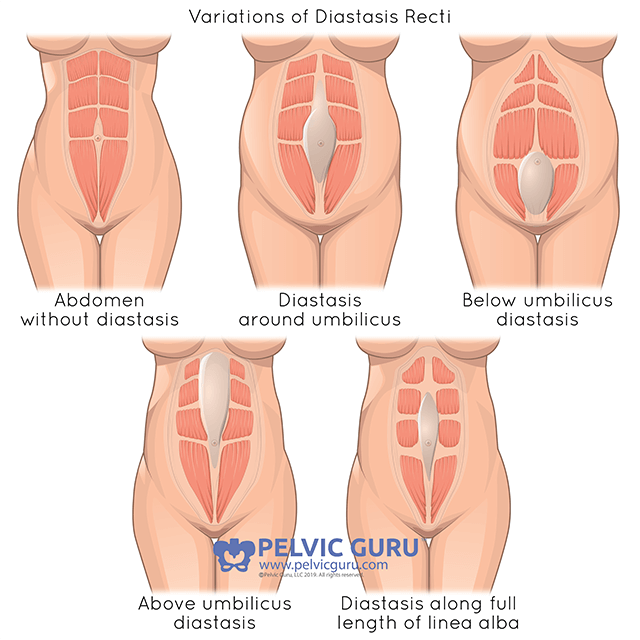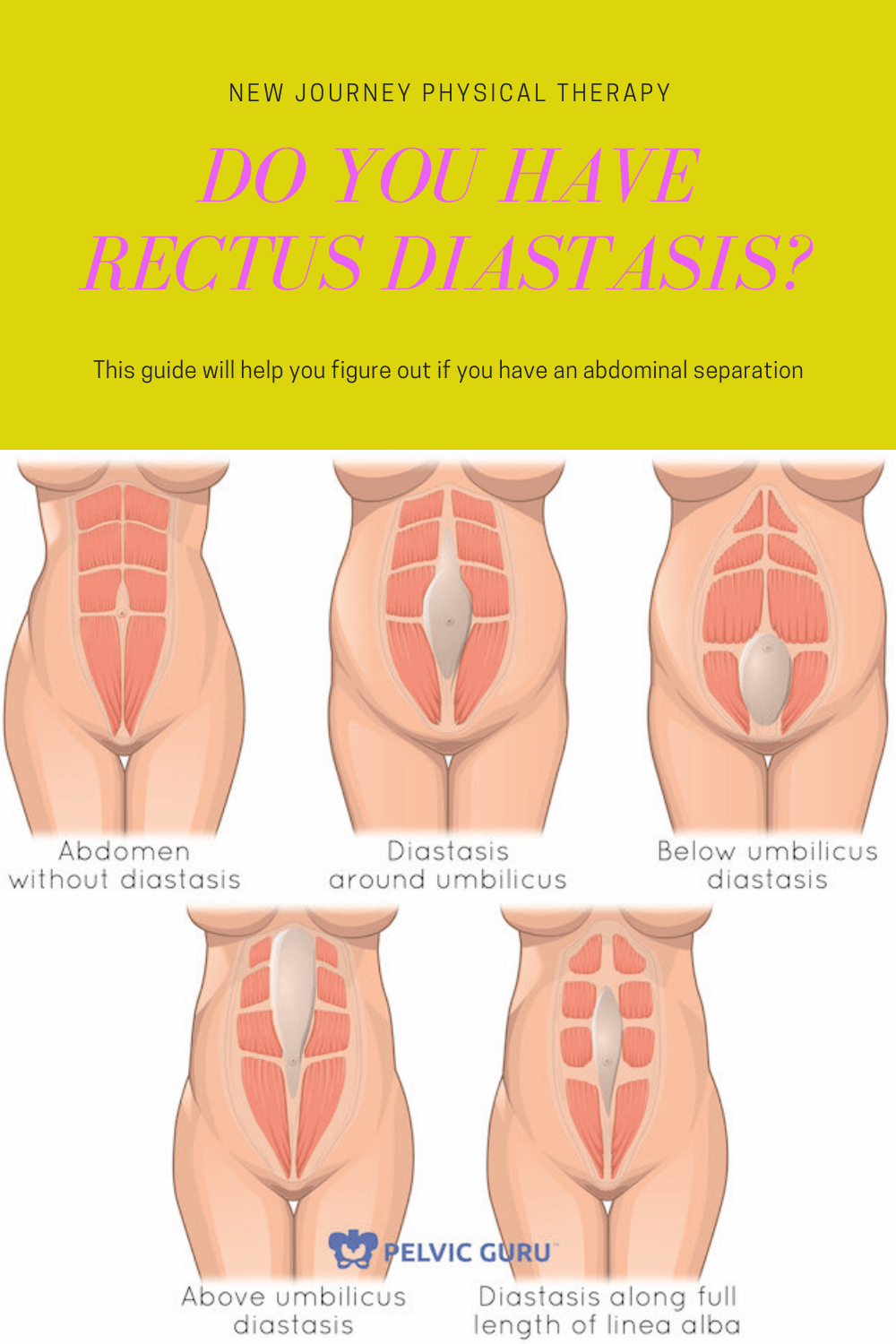Do I have rectus diastasis?
Permission to use copyright image from Pelvic Guru, LLC
First, I want to make sure we are all talking about the same thing. Rectus diastasis or diastasis recti is a thinning and stretching of the linea alba (fascia that runs vertically between the two sides of your abdominal muscles). Want to know more of the anatomy? Check out this post.
It is completely normal for this tissue to stretch and thin in pregnancy, in fact it occurs in 100% of pregnancies by 36 weeks. Now, I know you are rereading that and asking yourself 100% is everyone, so why is everyone talking about it and why is it a problem?
Having a wide or deep diastasis recti or rectus diastasis means that you are more likely to have difficulty contracting your abdominal muscles effectively to support your trunk and spine. You are more likely to feel weak and have difficulty getting stronger on your own. Having a wide or deep diastasis does not mean that you will have pain, that you cannot be strong, or that you need to limit your life.
Below is a video to help you test for a diastasis recti, but I want you to consider treatment just because you came to read this post. If you are questioning whether you have diastasis because you feel weak, then you would likely benefit from reeducating your muscles. If you have difficulty engaging your abdominal muscles, then you would likely benefit from reeducating your muscles. If you have ever been pregnant, then you would benefit from evaluation to be sure that you have truly recovered. Truly recovering means that you unconsciously engage your muscles in a consistent pattern that enables you to complete all tasks in your life including caring for your children, managing your house, doing your job, and exercising. Even if you do not have a measurable separation that you can feel, the fact that you feel weak means your muscle activation pattern can be improved.
[youtube=://www.youtube.com/watch?v=_-YHnQLsX7A&w=640&h=480]


